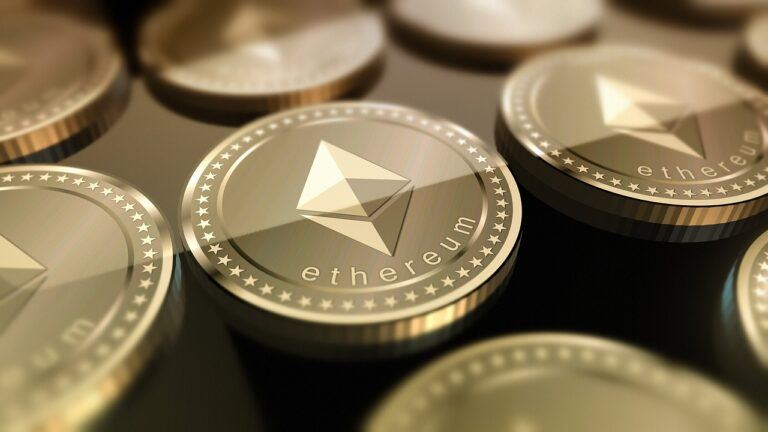This article covers some of the most interesting Ethereum-related news for the week that ended on 17 May 2020.
The First U.S. Based Exchange-Traded Ether Futures Contracts
On May 11, ErisX, which is “a unified platform for cryptocurrency spot and regulated futures trading and investing”, announced the launch of “the first U.S. based Exchange-traded Ether futures contracts.”
ErisX said that both individual and institutional investors would be able to get access to physically delivered Ether futures contracts based on ETH-USD with monthly and quarterly expirations.
ErisX went on to list some of the benefits to “miners, speculators, hedgers, and businesses” that run on Ethereum of using this new product:
- “Broader participation and diversity of actors, especially institutional actors, including investors, speculators, intermediaries, hedgers, miners/validators, and commercial users”
- “A diversity of time horizons and trading objectives, expressed through transparent instrument pricing and trading”
- “More robust, liquid, and resilient markets”
- “Markets able to integrate more information, quicker, into more efficient and accurate price discovery”
- “Improved risk management for asset owners, market makers, and miners/validators”
Gnosis and the Release of OpenEthereum 3.0
The Gnosis team published a blog post on May 11 that started with some background information on Ethereum clients and more specifically the decision taken by Parity Technologies in December 2019 to “transition” the Parity Ethereum codebase and maintenance” to “a DAO ownership and maintainer model” (this new decentralized project would be called “OpenEthereum”):
“Clients are core infrastructure that allow users to run a node for the Ethereum blockchain. Through running a node, users can participate in mining, create services like exchanges, and install network upgrades.
“There are several clients for Ethereum, and while providing similar services, they differ in implementation, features, and compatibility. Since 2015, Parity developed and maintained Parity Ethereum, a client implemented in Rust programming language.
“In December of last year, Parity announced they would be stepping down from maintenance work on the Parity Ethereum client and handing over its further development to the community.
“While there have been several public workshops, open discussions amongst stakeholders, and smaller updates since, we’re glad to formally share that Gnosis is overseeing this initiative to continue the client as OpenEthereum.”
Gnosis then went on to say that it had “received an initial grant from the Ethereum Foundation for $150,000” that would allow it to “begin building out an OpenEthereum team.” Gnosis mentioned that this work had resulted in the release of version 3.0 of OpenEthereum.
Vitalik Buterin’s Comments on the Launch Date for Ethereum 2.0
With regards to the upcoming launch of the Ethereum 2.0 network upgrade, there was an “Eth 2.0 Research Team AMA” that took place on Reddit on February 6, where Ethereum Foundation’s Danny Ryan and Justin Drake answered questions from the community.
When asked about the expected launch date for phase 0 of Ethereum 2.0, Drake said:
“I’m hoping we can launch by July 30, 2020 (the 5th anniversary of Ethereum 1.0). I think it’s unlikely we will launch in Q1 or Q2 2020 especially if we want three clients to be production ready for launch.”
He was then asked if he would consider it a failure if the launch of phase 0 did not happen in 2020:
“Yes, it would be a failure. I have 95% confidence we will launch in 2020 :)”
Ryan seemed even more confident about the launch of phase 0 in 2020:
“Phase 0 will certainly launch in 2020. Audits are out and testnets are getting stronger every week. Estimates depend on both the spec and clients getting (relatively) clean bills of health in 3rd party audits. The rest depends engineering concerns and stablizing/optimizing in this last mile of work.
“I don’t see a reality in which Phase 0 does not launch in 2020.”
Well, during an appearane on Monday (May 11) at CoinDesk’s “Consensus: Distributed” virtual conference, Ethereum Co-Creator Vitalik Buterin seemed to confirm the July 2020 launch date for Ethereum 2.0 that had been mentioned by Drake back in February.
When asked during an interview if the Ethereum 2.0 network upgrade was on track to launch in July 2020, Buterin replied:
“I think so, yeah…
“Ethereum 2.0 has testnets already. So, there’s the Topaz Testnet and the Schelsi Testnet… There’s also rollups that are adding scalability. The Optimism team recently announced a demo with Synthetix… There’s also a lot of work on cryptography and privacy… It’s moving forward on all fronts.”
The following day (May 12), Afri Schoedon, who is the lead developer for the Schelsi multi-client testnet, said that Marco Levarato was correct in saying that a July launch date for Ethereum 2.0 was impossible given the current status of tesnets and that Buterin’s comments to Coindesk had been misunderstood:
It’s impossible that will go live in July, there isn’t an official multi client testnet and this “coming soon” testnet needs 2 months of flawless run. We are in the mid of May
— Marco Levarato (@Marcolevarato) May 12, 2020
What Marco said. It's simple math.
The final spec is not implemented in any client and we didn't launch a coordinated testnet yet.
— Afr Schoe ⚡ (@a4fri) May 12, 2020
Going on stages or panels and putting out dates is not helpful at all. I don't think Vitalik said July. But I didn't see the talk.
— Afr Schoe ⚡ (@a4fri) May 12, 2020
This last comment by Schoedon prompted Buterin to reply, saying that he had misheard the interviewer’s question:
Yeah I did not say July. Perhaps the question contained the word July but I did not hear July when it was asked.
— vitalik.eth (@VitalikButerin) May 12, 2020
OK I definitely should have heard July in the question, it was my mistake.
— vitalik.eth (@VitalikButerin) May 12, 2020
It is worth pointing out that on April 28 Schoedon tweeted that he believed that we won’t see the Beacon Chain, a system chain that is at the core of Ethereum 2.0, until sometime next year:
⌛ If we push hard, end of year is realistic. I would be careful about such an estimation though.
🏁 Given we have only 7-8 months left this year, I wouldn't be surprised 2021 will be the year of the beacon chain.
— Afr Schoe ⚡ (@a4fri) April 28, 2020
Dentralized Exchange dYdX’s BTC Perpetual Contract Market
On May 13, decentralized crypto exchange dYdX published a blog post that announced that its BTC-USDC Perpetual Contract Market had finally become open to the public (but not available to U.S. residents) after several weeks of alpha testing.
The dYdX team explained that its new BTC product is important “not just for DeFi, but for the broader crypto market.”
dYdX then explained why it is an ideal platform for BTC trading:
- Liquidity: “dYdX has displayed an ability to spin up and grow new markets.”
- Functionality: “The dYdX BTC Perpetual retains the core feature set of existing vanilla perpetuals (stablecoins as margin and settlement, with a linear payout, no expiry and up to 10x leverage).”
- Security/Transparency: “Perpetuals on dYdX have fully transparent and verifiable liquidation mechanisms and insurance funds.” (Their smart contracts have been audited by OpenZeppelin.)
The next day, Antonio Juliano, who is the Founder of dYd, provided this update on his company’s share of DeFi earnings (for the year-to-date period):
dYdX currently accounts for almost half of all revenue in #DeFi pic.twitter.com/YoD1gDzuKn
— Antonio Juliano (@AntonioMJuliano) May 14, 2020
Reddit’s Launch of Two Ethereum-Based Tokens for Rewarding Its Users
On May 13, social news platform Reddit announced (via a slide presentation) “Community Points”, which is “a way for Redditors to earn a piece of their favorite communities.”
Reddit explained that users “earn Points by contributing to the community, for example by submitting quality posts and comments.”
Interestingly, Community Points exists on the blockchain (“independently of Reddit”) and that blockchain is Ethereum.
Here is how this will work:
“Community Points are stored as standard ERC-20 tokens on the Ethereum blockchain, so they’re interoperable with existing blockchain tools.”
“On Ethereum, Community Points are run by a suite of smart contracts that manage balances, distribution/claiming, and purchasing memberships.”
“Community Points are currently in beta (through summer 2020). During that time, they will be on the Rinkeby testnet, and balances, transactions, and memberships may be reset.”
“After the feature leaves beta, Community Points will be migrated to the Ethereum mainnet. Points balances will be carried over (though will need to be reclaimed).”
The two new ERC-20 tokens, which are called “MOON” and “BRICK”, will be used as Community Points on subreddits “/r/Cryptocurrency” and “/r/FortNiteBR” respectively.
According to a report by Forbes, these tokens “will be stored in the Reddit Vault, a wallet component that’s baked in to Reddit’s Android and iOS apps.” Users “will be able to transfer these tokens off their Vault to any other ERC-20 compatible wallet.”
Visa’s Patent for ‘Digital Fiat Current’ Built on Ethereum
On May 14, the United States Patent and Trademark Office (USPTO) published a patent titled “Digital Fiat Currency” (originally filed on 8 November 2019) belonging to Visa International Service Association.
Eric Conner, who is the Product Manager at Gnosis, as well as the host of the “Into the Ether” podcast and the Editor of the EthHub newsletter, tweeted about this patent on May 15:
Visa's patent to digitize dollars shows that they plan to use Ethereum pic.twitter.com/XANC4q0Twn
— eric.eth (@econoar) May 15, 2020
Prysmatic Labs’ Topaz Tesnet for Ethereum 2.0
On May 15, Ethereum 2.0 develper Terence Tsao, who works at Prysmatic Labs, provided this status update on his firm’s Topaz Testnet for Ethereum 2.0:
🎊Milestone! 200k slots at Topaz testnet!🎊
💎29.3k validators
💎Still at 90% participation
💎Almost 1M goETH staked
💎@prylabs controls 47% of the network
💎Highest peer count for a single node: 528Cheers to another 100k! 🍻 https://t.co/MrKfP3dcHv pic.twitter.com/f2UPuFH3zK
— Terence Tsao (@terencechain) May 15, 2020
Featured Image by “elifxlite” via Pixabay.com









